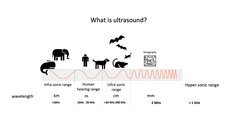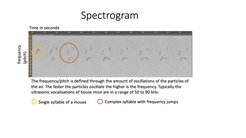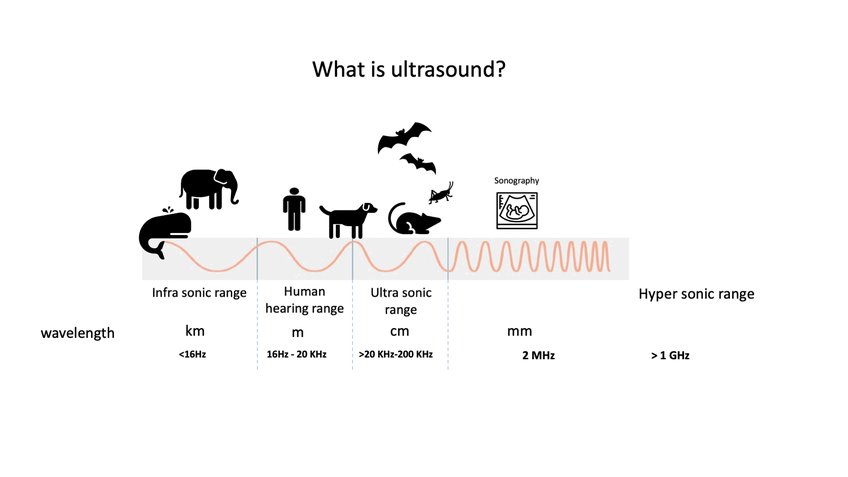The language of mice
Beyond our hearing
Mice can communicate, almost like us humans. However, we only hear part of what the mice say, because we can only perceive pitches between about 20 hertz and 20 kilohertz. When mice want to warn other mice, they communicate in a range that is audible to us, i.e. below 20 kHz. We perceive this as a high-pitched squeak. If, on the other hand, mice want to exchange information with each other, they use a range that is not audible to us, the so-called ultrasound, i.e. above 20 kHz.

Mice use individual signals (so-called syllables) in their "language". These syllables are not strung together at random, but follow a complex pattern. Many syllables in a row result in a "call". It is assumed that mice exchange a wide variety of information in this way, for example about available food or the desire to mate.
One Example for the language of mice:
Western House Mouse
Gender: female
Origin: Germany
We were able to show that mice of different origins also differ in their language, but only in nuances. In contrast, we were able to find much greater differences between the language of males and females. One example: Female mice communicate more, especially with other females.
According to current knowledge, mice do not learn their language, rather it seems to be genetically determined. During the development of the mouse, the calls change, so that the calls of young animals can be distinguished from those of growing mice and adults. It has even been shown that mice can recognise their own family by their call.
The calls of the house mouse are not audible to us. Using a computer, we can modulate the calls slower and deeper in our hearing spectrum so that we can hear them.
The ultrasound can be graphically represented in a spectrogram. You can see the call over time and in the height of the frequency.


